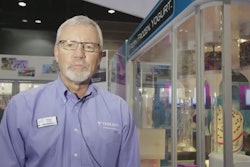
What if you picked up a package and it knew you? This is now within the realm of possibility as printed electronics, individualized communication, location-based applications, and commercial Big Data systems begin to understand and interact with consumers on an individual basis.
Packaging is the immediate, physical carrier of both the product itself and of information about the product it contains. Through the integration of an increasing number of smart-phone and tablet code-recognition apps, it becomes a link to the location, history, and preferences of the consumer.
Apps that allow real-time comparison shopping now provide consumers with a broad selection of product information, including product reviews, immediate price and availability comparison, and information about safety and quality problems—all to the advantage of the savvy consumer.
Similarly, these apps and online shopping systems say a good deal about the consumer. Through clever use of smart-phone apps, promotions, and links, the package information systems used by the consumer play a role not only in engaging the consumer, but in creating a valuable, individualized, large-scale picture of their trends and preferences for use in marketing. Large, commercial data aggregators, ever faster computation capacity, and better correlation algorithms now allow marketing of individually targeted alternatives to consumers in real time.
In the physical world, Near Field Communication, originally intended to expand “phone-pay” systems such as Google Wallet and PayPal and now implemented into electronic devices such as smart phones, offers an intriguing extension of these ideas of data and interaction coupled to packaging. It provides a means for on-pack devices to recognize and respond to the consumer (or the consumer’s phone) on an individualized basis. At the same time, the implementation of unique identifiers lets marketing systems understand which particular item the customer has in hand. In either case, it’s now feasible for the package to respond in kind. This may become more closely integrated as part of the consumer experience as these systems evolve.
On the horizon, printable batteries, powered shelving systems, and water-soluble printed wiring applications are under development and are specifically being targeted at the consumer goods packaging industry. At current levels of technology, these can provide connectivity and modest processing power while “printable” LED particles (introduced by Nth Degree Technology in a hotly contested field) add an intriguing possibility of disposable interactive displays that can respond to the customer’s examination with carefully targeted reactions.
It’s within the realm of current technology to have the package, the consumer, and data networks linked while the consumer examines a product. How? By making the interaction between handheld device, on-package electronics, and networked data systems immediate and by tailoring the reaction to the preferences of each consumer. With the convergence of these marketing trends and technology developments, there could be a revolution in the marketing fusion of consumers, the devices they carry, and the packages they hold.
The package is becoming its own data device, recognizing the individual consumer by selling itself, warning the consumer of potential danger, or supplying tutorials or other content in real time. With such a system, the package—often seen as a cost item to be minimized—may become the most valuable part of the product-package system.
Scott A. Morris ([email protected]) is the director of the packaging program at U. of I. Urbana-Champaign.


























